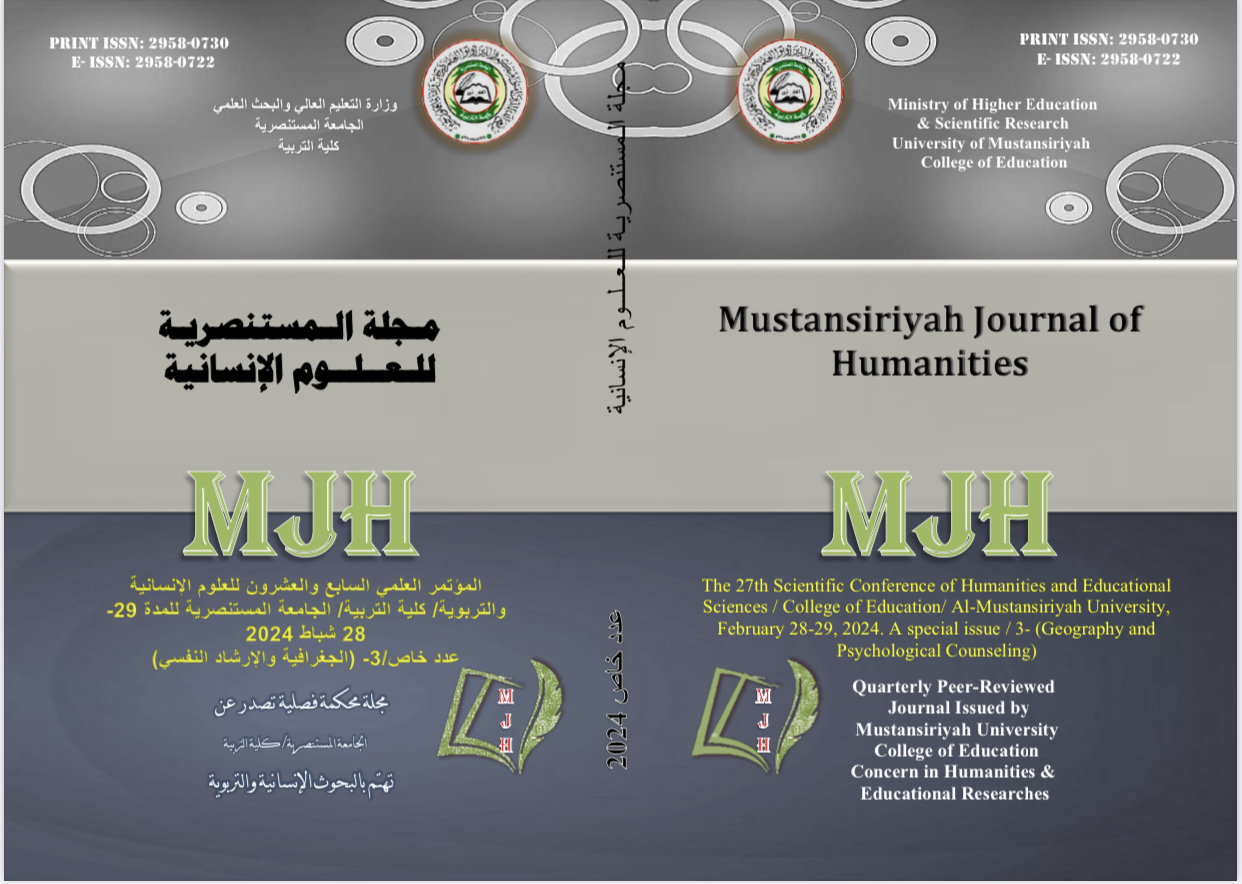Deducing terrestrial appearances from satellite images of the moon (Landsat-9) - eastern Wasit Governorate, study
DOI:
https://doi.org/10.47831/mjh.v3iخاص.509Keywords:
Landform, geomorphic process, satellite image, Landsat-9Abstract
The study area is located east of Wasit Governorate, between latitudes 32° 29' 14" - 33° 54' 22" N, and longitudes 45° 08' 06" - 47° 10' 07" E, and extends over an area of about 16,148.7 square kilometers. It includes the eastern lands of Wasit Governorate, as well as areas within Iranian territory estimated about 7380 square kilometers within mountainous lands representing the upstream area of valley basins. The problem of the study lies in the lack of a detailed study to classify the land forms in the study area, as well as the inability to conduct a field study because the main geomorphic landforms are located outside the Iraqi borders, which necessitated relying on remote sensing technology, represented by satellite images of Landsat 9, with a spatial resolution of 30 meters. The study aims to conduct a classification of landforms in the region using satellite images, by employing specialized software in spatial analysis that works on visual analysis and interpretation of landforms & landscapes in the region using ArcGIS Pro v.3.02, ArcGIS10.8.2 programs to reach an accurate classification of landforms. The results of the analysis of satellite images showed the distinction of (31) geomorphic landforms different in their origin, formation, and the geomorphic processes causing them, which varied in type between depositional, compositional, structural, and erosional over study area.





